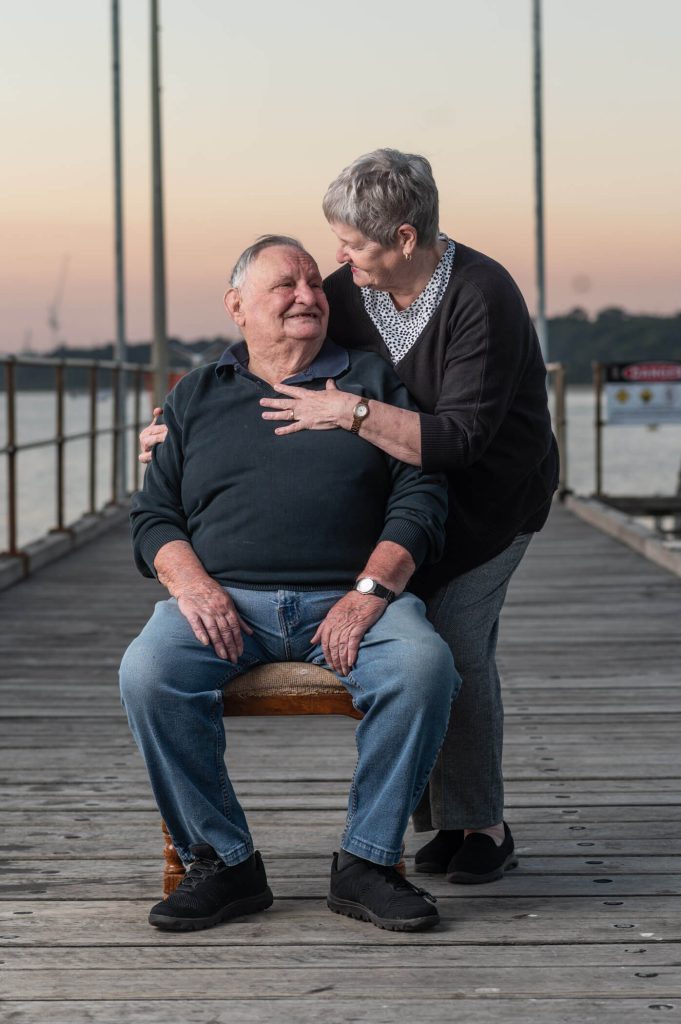
John was born in 1939. Early in his working life, he was employed in the city as a coppersmith and blacksmith. At that time, vehicle repairs involved hammering and straightening metal panels by hand. Items that were damaged were not simply replaced but restored, requiring practical skill and careful attention to detail.
By the time John was in his early thirties, he decided to change direction. He joined with Dave, a friend he had known since childhood, to enter the scallop fishing industry. Together, John and Dave built their first scallop boat themselves. They berthed this boat at Mordialloc Creek and began fishing in the Commonwealth waters that extended from along Bass Strait up towards the Gippsland Lakes. These waters offered more extensive fishing grounds than just the bay, allowing fishermen to travel farther and potentially bring in larger hauls of scallops.
After operating with their original boat for a while, John and Dave replaced it with a different vessel called The Norden. The Norden was a fibreglass boat, constructed in Western Australia. It measured approximately 49 feet in length. Inside, there were bunks where crew members could rest during longer trips, and there was a stereo installed in the bathroom. These features were not common in all working boats, and having such conveniences made working at sea more manageable. The addition of bunks helped the crew deal with the demands of their schedule, and the stereo provided a way to have some background sound during off-hours, even in a utilitarian space like a bathroom.
At that time, scallop fishermen like John and Dave could still operate beyond Port Phillip Bay, utilising the wider Commonwealth waters. However, over time, the regulations governing scallop fishing changed. Eventually, the entire scallop fleet was restricted to Port Phillip Bay. This shift meant that fishermen could no longer travel to the broader areas they once fished. Instead, they had to operate within the bay. Only 16 bay licenses were issued, limiting the number of boats that could continue fishing in that area. This reduction in available territory and licenses meant that many fishermen who had previously relied on wider fishing grounds now had fewer options and faced more concentrated competition.

Later, the government offered to buy back these 16 bay licenses. Each license holder would receive about $50,000. This amount was generally much lower than what many had originally invested, as some individuals had paid significantly higher sums for their licenses when the industry allowed access to more extensive fishing waters. With the buyback in place, all 16 boats associated with the bay licenses were placed on the market at roughly the same time. Having multiple boats up for sale simultaneously created a challenging market for sellers. Potential buyers had many similar options and could negotiate lower prices.
John and Dave were among those who had to sell. They sold The Norden for about $120,000. This figure did not reflect its original value or the financial expectations they may have once had for the vessel. Still, given the circumstances, it was what they could secure. After the sale, The Norden was moved out of their hands and away from the scallop trade.
Following the end of his scallop fishing career, John sought a different way to support his family. He turned to a land-based business and purchased a laundromat in East Malvern. The laundromat had around 20 washing machines and a similar number of dryers. Operating the laundromat provided a steady income, but although it made money, John did not enjoy running it. He continued for about eight years before retiring from the business entirely.
In addition to his work experiences, John was also involved in improving a home in Black Rock. Originally, the house had two solid brick rooms at the front and the rest was built of timber. Over a long period, John transformed the building. He removed the timber sections and replaced them with brick, eventually adding a second story. During this process, he laid approximately 90,000 bricks by himself.
He was not a trained bricklayer but handled the project using the skills and problem-solving abilities developed over years of practical, hands-on work. The result was a two-story brick home that he and his family occupied for about 30 years. Eventually, they sold the house to help cover the debts from the scallop days.
John still lives in Black Rock with his very loving wife Leigh.

In Bayside, there are likely many stories similar to John’s, where individuals adapted to shifting regulations, industries, and personal circumstances. Many of these stories remain known only within families or among friends, but they hold details that illustrate past conditions and local history.
If you have a parent or grandparent or know someone in the Bayside area who has experienced similar changes or worked in roles that reflect shifting industries and local conditions, I’d love to find out more and see if I can collect 20 portraits and stories through 2025. Click here to send me a message.
NOTE: As we end 2024, there are still some dates available for family portraits, and especially extended family portrait sessions while the whole family is all together. Limited spots are available, so if you want to have a chat, please get in touch asap. (Click to get in touch)
